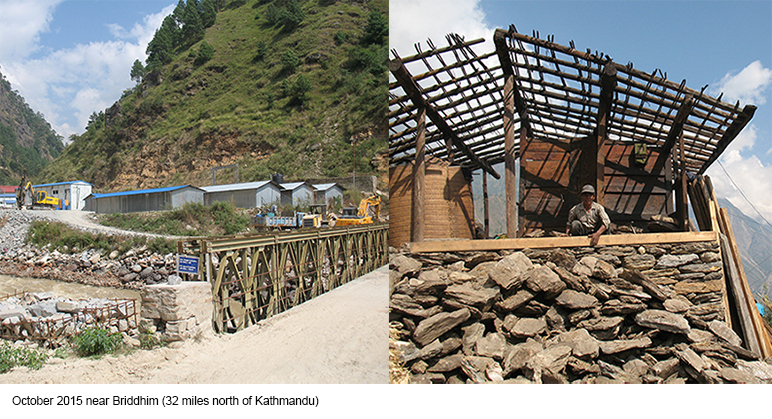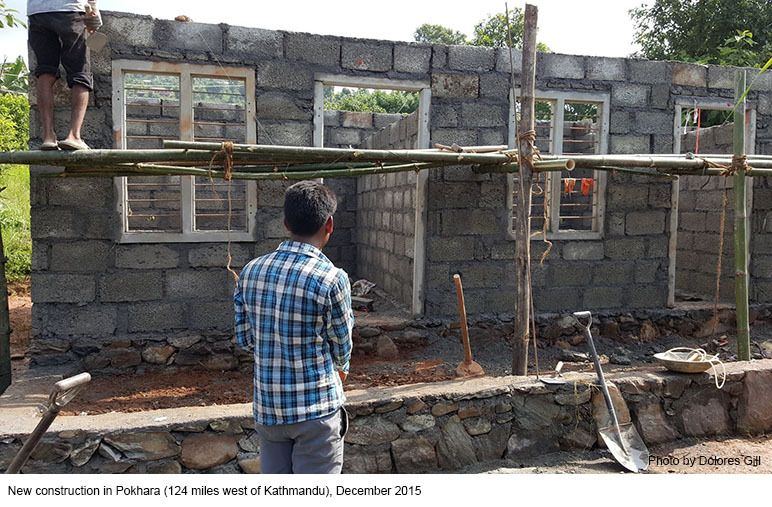
In the aftermath of a natural disaster like an earthquake or hurricane, structural engineers are in high demand as governments struggle to ensure that damaged buildings are safe for public use. That’s especially true in the developing world, where building codes are often ignored and qualified structural engineers are fewer. Organizations such as Engineers Without Borders and A/E/C industry groups work to dispatch structural engineers to the front lines of disaster relief, where they can help people get people back into their homes and begin picking up the pieces.
Scott Douglas, a former DCI Engineers Project Manager, provided damage assessment on buildings following the devastating earthquakes in Nepal in April and May of 2015. Douglas, who has previously done relief work in Haiti and Afghanistan, was one of three Structural Engineers Association of Washington members who recounted their experience at a Dec. 14, 2015 SEAW event, giving prospective future volunteers tips on what to expect when they arrive in a disaster zone overseas.

The devastation caused by the Nepal earthquakes was immense. The initial 7.8-magnitude earthquake struck April 25 near the Kathmandu Valley, the most populated area of Nepal. A powerful 7.3 aftershock occurred on May 12, causing the collapse of hundreds of buildings that had been structurally weakened by the first tremor. All told, more than 9,000 people died and more than 23,000 were injured. The Nepali government estimated that the quakes caused $10 billion in damage – more than half the country’s annual economic output.
As one of the poorest countries in the world, the standards for structural integrity of the Nepal’s buildings were very low. Douglas said Nepal has only about 400 licensed structural engineers, and half of those were working overseas at the time of the quake. The country has a national building code, but only three out of the country’s 58 municipalities use it during their permitting processes.
In urban areas like Kathmandu, a majority of the buildings consist of reinforced concrete frames with walls consisting of masonry-infill, though Douglas said it was often debatable whether the masonry infill was providing any shear support or simply serving aesthetic purposes. The standards of concrete reinforcement were also haphazard – the SEAW team found examples of rebar that didn’t connect between levels or entire columns lacking any reinforcement. It was also distressingly common to see a fourth, fifth or sixth story added on top of a concrete frame that was designed to accommodate two or three levels. Little consideration was given to seismic separation of adjacent buildings, which led to many examples of buildings that collapsed because they had impacted each other during the shaking.
Standards were even more flexible in more rural communities, where unreinforced masonry buildings held together by mud were common, as were homes made from adobe. Many historically significant buildings were lost during the quakes, including in Kathmandu’s Durbar Square, a UNESCO World Heritage Site with temples dating back to the 10th century.
With more than 250,000 structural assessments needed in the country, hundreds of thousands of people sleeping in makeshift shelters and the summer monsoon season quickly approaching, Douglas and the SEAW team was tasked with triage when they arrived in mid-May. They used the standard ATC-20 framework for post-earthquake assessment, while keeping in mind the realities of building standards in the developing world. Buildings were evaluated both inside and out; a green placard was given to buildings fit for human use, while red was used for those on the verge of failure. Given the pressing need for immediate shelter, Douglas said they made liberal use of the yellow “restricted use” placard, which allowed for limited use of a building. Many Nepalis were told they could use the first level of their buildings but not the upper stories, giving them the ability to exit quickly in the event of a strong aftershock.

If you’re a licensed engineer interested in assisting after an international disaster, Douglas suggests the following:

Caleb Heeringa, Communications Coordinator | Caleb enjoys immersing himself in the A/E/C industry and informing audiences about DCI’s contribution to state-of-the-art structural development. Preferring a conversational style, he naturally narrates the firm’s design approach and project details to professionals in other industries. With a knack for adventure, he enjoys international travel and exploring the back corners of Washington’s wilderness.


